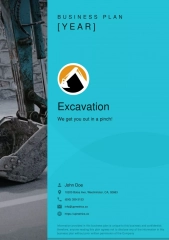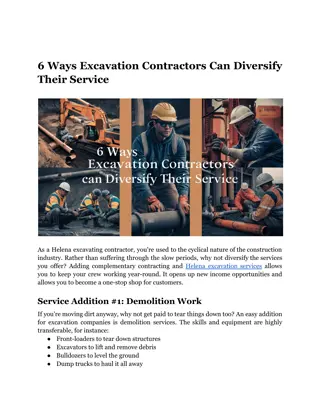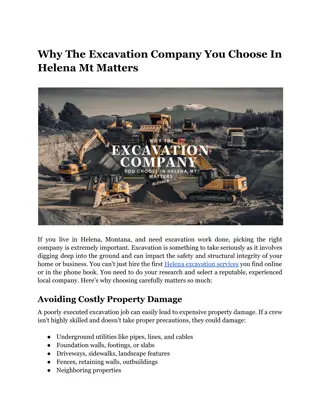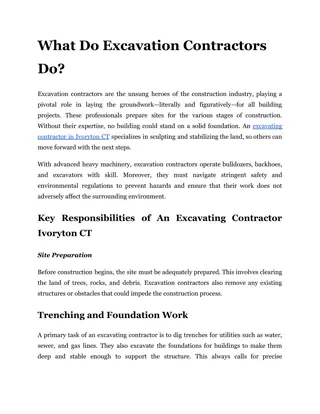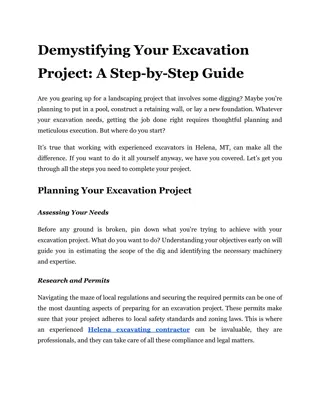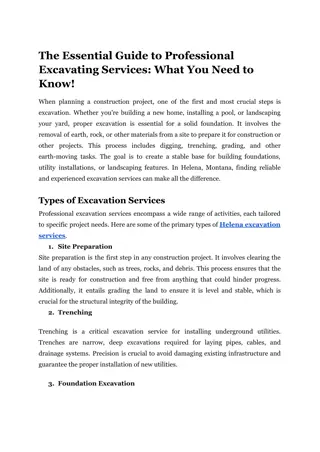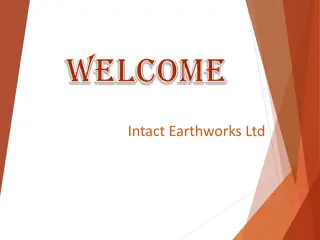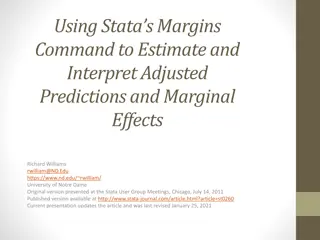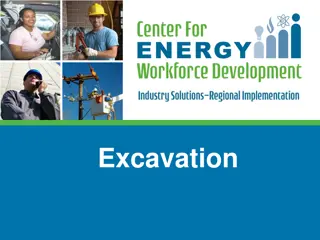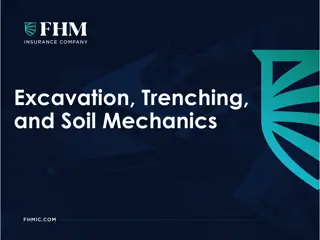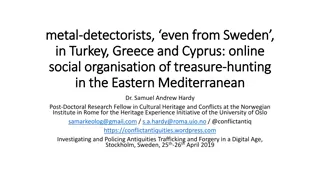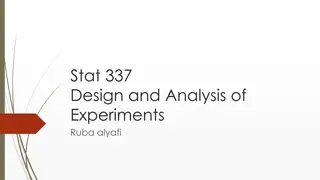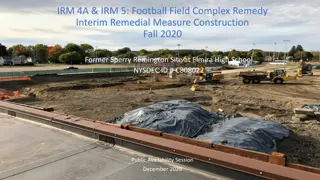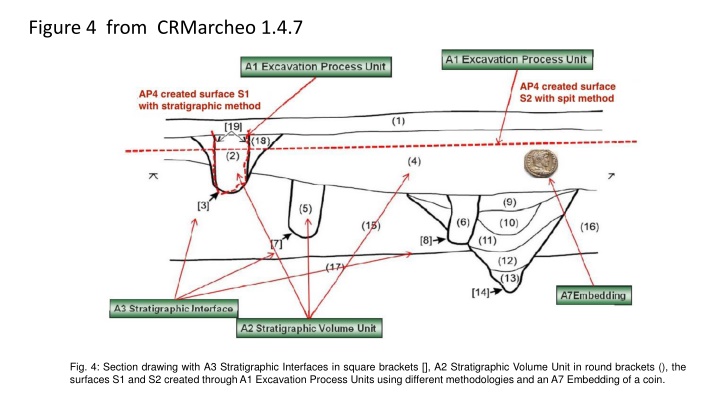
Modeling the Relation Between Excavation Interfaces and Stratigraphic Units in Archaeological Context
This archaeological study delves into the modeling of the relationship between excavation interfaces such as A10 and A8 Stratigraphic Units, focusing on stratigraphic genesis, physical features, and alteration processes. The analysis includes the creation of surfaces through excavation process units, with a particular emphasis on the example of mechanical layer cutting through different stratigraphic units. The study also touches upon embedding artifacts like a coin and the stratigraphic modification events that occur during excavation processes.
Uploaded on | 2 Views
Download Presentation

Please find below an Image/Link to download the presentation.
The content on the website is provided AS IS for your information and personal use only. It may not be sold, licensed, or shared on other websites without obtaining consent from the author. If you encounter any issues during the download, it is possible that the publisher has removed the file from their server.
You are allowed to download the files provided on this website for personal or commercial use, subject to the condition that they are used lawfully. All files are the property of their respective owners.
The content on the website is provided AS IS for your information and personal use only. It may not be sold, licensed, or shared on other websites without obtaining consent from the author.
E N D
Presentation Transcript
Figure 4 from CRMarcheo 1.4.7 Fig. 4: Section drawing with A3 Stratigraphic Interfaces in square brackets [], A2 Stratigraphic Volume Unit in round brackets (), the surfaces S1 and S2 created through A1 Excavation Process Units using different methodologies and an A7 Embedding of a coin.
Figure 4 from CRMarcheo 1.4.7 A10 Excavation Interface A10 Excavation Interface Assume that S2 was create first, that is a mechanical layer cut through 2, 3, 18 and 19. How do we model the relation between S2 (A10 Excavation Interface) and 2, 3, 18 and 19 (A8 Stratigraphic Unit)? A more common example would be a vertical profile cut through 2, 3, 18 and 19 . The modelling issue is identical
A10 Excavation Interface and its physical relation to A8 Stratigraphic Unit Stratigraphic Genesis and Excavation Genesis S18 Alteration E7 Activity AP13 has stratigraphic relation S17 Physical Genesis A5 Stratigraphic Modification Event A1 Excavation Process Unit A process resulting in the displacement of a limited amount of matter which has settled into a relatively stable form AP1 produced S20 Physical Feature S10 Material Substantial A4 Stratigraphic Genesis AP4 produced surface AP9 took matter from S20 Physical Feature S11 Amount of Matter AP7 produced AP8 disturbed A10 Excavation Interface ? AP yy has physical relation A8 Stratigraphic Unit AP11 has physical relation AP22 is confined by S22 Segment of Matter P9 is part of A2 Stratigraphic Deposit Unit AP24 is or contains remains of A3 Stratigraphic Interface E18 Physical Thing 3 AP12 is confined by
Amendment: Drop AP12 is confined by, use O7 confined (was confined by). Move AP11 has physical relation (+ AP11.1) up to S20 Rigid Physical Feature as a new Oxx has physical relation (+ Oxx.1) AP9 took matter from S10 Material Substantial S18 Alteration O7 confined (was confined by) [used instead of AP12 and a AP22] AP13 has stratigraphic relation S11 Amount of Matter S17 Physical Genesis AP15 is or contains remains of A5 Stratigraphic Modification Event E26 Physical Feature E53 Placel S22 Segment of Matter S20 Rigid Physical Feature A4 Stratigraphic Genesis Oxx has physical Relation [was AP11 and APyy] P9 is part of AP8 disturbed AP7 produced A10 Excavation Interface A7 Embedding AP1 produced A8 Stratigraphic Unit AP4 produced surface AP19 is embedding in (contains embedding) AP18 is embedding of (is embedded) A3 Stratigraphic Interface A2 Stratigraphic Volume Unit A1 Excavation Process Unit AP6 intended to approximate (was approximate) AP21 contains (is contained in) 4 E18 Physical Thing

